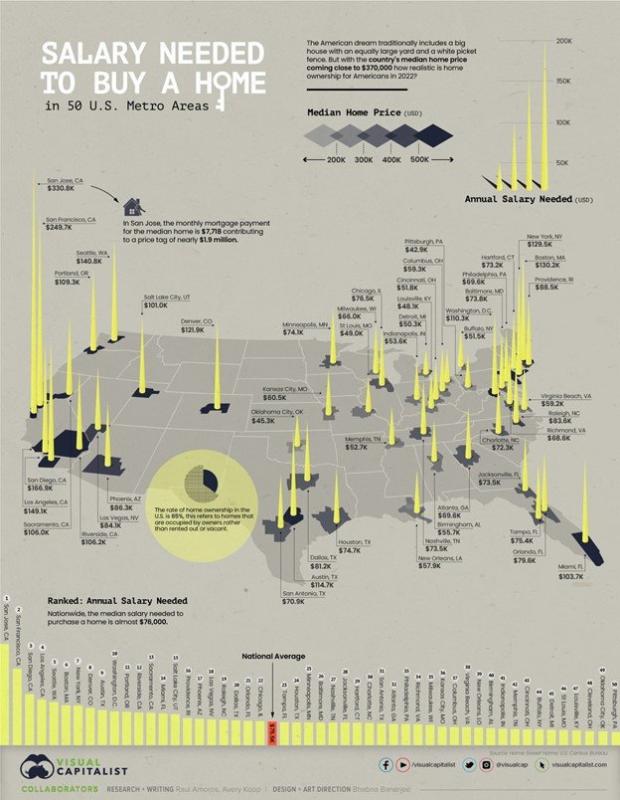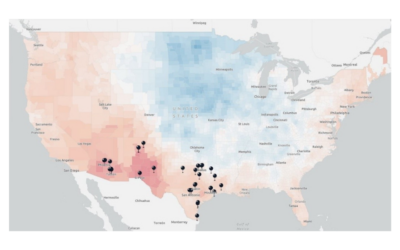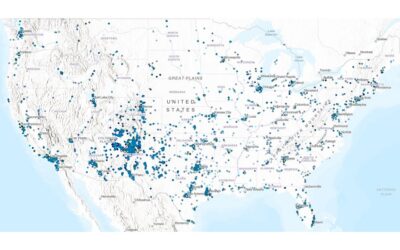By Gabe Buckley
By observing the economics of keeper compensation, it’s no secret that keepers land on the lower end of the wage spectrum. Like all other wages and salaries, the market value of keeper compensation is driven by several economic factors – including the size of the labor pool, the rigor and danger of the work, the technical ability required, and the educational requirements. However, there is one factor that artificially lowers the market value of keeper compensation more than any other: passion.
In this article, we’ll take a look at why passion lowers the market value of animal care worker wages. More importantly, we’ll consider many factors that have emerged in recent years that are making people reevaluate the value of following their passion – a trend contributing to The Great Resignation, especially as it applies to zoos, aquariums, and similar organizations.
To start, let’s consider the basic decision that all animal care personnel make when they decide to follow their passion for animals.
Passion vs Pragmatism
To start, let’s consider the basic decision that all animal care personnel make when they decide to follow their passion for animals.
When it was time to choose a major in college, I knew that I had a passion for biology. I also knew that there were few jobs and many candidates for positions where you get to work hands-on with animals. My parents offered me two pieces of seemingly conflicting advice:
“Pursue your passion, and everything else will follow,” my mom offered.
“Go to Law School,” my dad advised.
The choice was clear: follow your passion and accept a low wage and late retirement – or – choose a highly lucrative career that you are not passionate about. There is of course a middle ground, but it is not always easy to see as a young person, nor as a parent.
The argument here is passion versus pragmatism: the unknown versus the sure thing. It is a decision all zookeepers and animal care technicians have made. Working with animals is immensely rewarding, but this passion is also very popular. This, historically, has meant that the keeper candidate pool is very large. Therefore, if the wage is livable and working conditions are reasonable, the pool should remain large. In a very real sense, a passion for animals drives down the market value of keeper compensation. Anyone who has been through an Economics 101 course will recognize this as a fundamental market principle: supply vs. demand.
However, many zoos and aquariums are having a more difficult time filling positions than normal and have started to see higher turnover rates in recent years. This begs the question – is the current keeper wage too low?
To start, let’s look at the data on keeper compensation provided by the last Association of Zoos and Aquariums (AZA) Compensation Survey.
Keeper Compensation Data
Keeper compensation varies on several factors – including organization size, region, and local economics. However, if we group all AZA Compensation Survey respondents by region, we can start to look at how keeper compensation varies across the country. The graph below shows the median wage of keepers from organizations in different AZA-defined regions.

Data from 2021 AZA Compensation Survey
There is a large difference in wage determined solely by region. Zoos and aquariums in the Far West / Pacific Northwest region pay significantly more (on average) than zoos and aquariums in the Southeast/South. However, there are many reasons for this that are not readily apparent in this graph:
Many economic factors contribute to this difference. The regions above have different costs-of-living, different labor markets, and a different composition of small and large organizations.
Keeper tenure may differ between regions. While the average for the entire AZA survey was 2.5 years, keepers in the Far West/Pacific Northwest Region may have a higher average tenure than other regions.
This is the median keeper wage – sometimes considered a more robust middle metric when looking at skewed data sets. However, the mean should also be considered and compared to the median to see just how skewed the curve is and if potential outliers are raising or lowering the median value.
All things considered – the AZA Compensation Survey is a good data-set, but it is only a starting point in the process of determining a compensation package. It tells us where wages were in 2021, but not why they were at that level or where they might go from here. To analyze a compensation package, many current and future economic conditions should be evaluated.
What is a Living Wage? (1)
A great way to estimate the value of passion is to look at the “living wage” – a calculation of what it takes to live in a particular area, without any other income. A living wage calculation takes into consideration how many earners are in a household, how many children are being supported, etc. The living wage includes the costs of all the basic items a household needs to be self-sufficient(2). If you receive a wage for a job that is below the living wage, then you are essentially taking a negative net income. This is unsustainable for the long term, and essentially defines where wages start to exploit passion.
To see how a living wage works to help determine the market-value of keeper compensation, look at the graph below. This graph shows the average living wage for each region of states, as defined by the AZA. By grouping state averages in this way(3), we can easily compare this living wage data to data from the AZA’s Compensation Survey (above).
By comparing the two graphs, we find that median wages in the Southeast/South and Southwest regions are lower than the living wage for each household configuration in those regions.

Data from MIT Living Wage Calculator
In other words, if you are a single person household or part of a two-income household raising 1 child in the South, a starting keeper salary will likely leave you with a negative net income(4). While many people work at this level, it increases the risk of accumulating debt, lowers a person’s ability to afford a home, set a much later retirement age, and can lead to many other negative, long-term effects.
Furthermore, it should be noted that if potential candidates have more than one child, run a single-parent household, or have additional costs for caring for loved ones outside of their immediate family (like elderly parents or grandparents) then the living wage increases significantly. Consider the graph below, which looks at the living wage of a single parent in each one of the regions:

Data from MIT Living Wage Calculator
Right away, you should notice that single parents need a much higher wage to meet their needs. The single-parent living wage exceeds the average keeper wage in all AZA regions. In fact, the living wage required as a single parent is double the average AZA keeper wage in some regions. While single parents have one of the highest living wages, additional children or dependents can push the requirements even higher. For many potential candidates, the responsibilities of taking care of dependents can dictate that animal care is not a viable career path.
Even if most of your staff falls above the living wage requirements in your region, there are many other factors that making many people re-evaluate the balance between passion and pragmatism.
Educational Requirements
Two ends of a spectrum are forming related to the educational requirements for starting keepers:
On one side, employers ask that degrees in Zoology, Biology, or Conservation Science form a foundation upon which more specialized skills and training can be built upon during on-the-job training. In areas where it is feasible, a zoo or aquarium often provides unpaid or low-paying internships for college students that help create a recruitment pipeline into keeper positions. Proponents would argue that this provides employees with a broader general education and specific field-related education that aids in solving many of the complex, novel situations they will have to deal with (5).
On the other side of the spectrum, some employers are requiring a lower level of education. On-the-job training is provided, either in a more focused apprenticeship program or simply from experience gained shadowing other keepers. The specific field-related knowledge must also be gained on the job and may not be as broad as a college education would provide. Many arguments can also be made for this form of recruitment strategy (6)
However, you have to decide whether to tailor your strategy to local, recent trends or national, long-term trends. The following graph from the U.S. Bureau of Labor Statistics shows the dramatic decline of teens entering the workforce from the period between 1996 and today:

The internet itself is likely a major reason why the labor force participation started dropping so precipitously after 2000. Since its widespread adoption, the internet has been providing transparency to job markets, living conditions, and wages all over the world. In fact, you’ll notice that the labor participation of 16- to 19-year-olds is lower than it has ever been.
One hypothesis is that the value of a college education was vastly increased by the internet, due to the increased transparency of how far any given degree might be worth in the workforce(7). This hypothesis seems to be supported by the fact that the college enrollment continues to rise – largely due to the enrollment of young people who would have otherwise joined the workforce. You can see this trend below:

For the past six decades, college enrollment among high school graduates has been increasing. That says a lot about how much young people will continue to value education and see a college degree as key to many potential doors on the national scale.
For zoos and aquariums, the challenge will be negotiating recruitment strategies and offering compensation packages that will remain attractive to a large enough pool of potential candidates. The size of your organization and its proximity to educational institutions will have big impacts on the recruitment strategy you choose.
However, there are many other issues to consider when developing a recruitment pipeline, including the challenge of providing equitable access to career opportunities. This is just the first stage in the career journey of a new keeper. Even after negotiating the education maze, new keepers will want to start a life.
Housing Requirements
Not all housing markets are created equal, and keepers and other young people new to the job market are keenly aware of that fact. The Pew Research Center recently reported that young people are living with their parents at levels not seen since the Great Depression. In the 1960s and ‘70s, the rate was only around 32%. In 2020, that level spiked to over 50%. This speaks to a number of emerging economic and social trends, but it directly relates to the rising cost of housing in many places.
The image below, from Visual Capitalist, shows exactly how far a zookeeper salary will go towards purchasing a home. In many places, even a two-income household at an average keeper salary would not purchase a mid-level home. This means that keepers have to wait far longer than their peers to purchase a home. While paying rent in the meantime, this rent will account for a larger portion of their income than their peers. All in, these effects can set hopeful homeowners back years or decades.

Find your city on the map and see what the income requirement is for buying a home at the median price. From a potential keeper perspective, the thought of never being able to afford a home is a huge deterrent – would new keepers at your organization be able to buy an average house at the beginning of their career? If not, they will likely not stick around long.
The Bottom Line
Companies like Chipotle, McDonalds, Best Buy, FedEx, Home Depot, Publix, and Walmart are all offering similar starting wages near starting keeper wages – plus many fringe benefits (like tuition reimbursement) and ample advancement opportunities. Many potential keepers in younger generations are putting their passion on the shelf so they can meet basic standard-of-living concerns.
To attract and retain quality candidates, an organization must consider the journey each new employee would have to make over their career. If the journey is fraught with massive debt, decreased disposable income, and limited career opportunities, then you are limiting your potential candidate pool to the small group of people who have decided that following their passion is worth significant lifelong financial hardship. There are many potential candidates out there willing to sacrifice and arm and leg for animals and conservation, but they wouldn’t dare jeopardize the financial future of their dependents and families.
However, an organization that fine tunes every aspect of their recruitment and compensation practices can manage to optimize the balance between passion and pragmatism. Setting compensation levels, developing recruitment pipelines, determining appropriate advancement opportunities, and finding good talent are all immensely complex subjects. Plus, analyzing all the data to strike the right balance takes an enormous amount of time. It is a daunting task, but one very much worth doing in the present market.
Do not hesitate to reach out to us when you hit a hurdle – we can answer any specific questions you may have while you are starting a compensation review. We also offer deeper insights into your specific market region, including a survey that collects more recent and relevant data from targeted benchmark organizations in your region!
Combined with our powerful geographic data tools, we can identify and target a potential talent pool within a drivable distance. Then, we can help you look at all the metrics to determine a reasonable starting wage. Other metrics can help to determine appropriate annual cost-of-living increases, potential career progression, fringe benefits, and other important compensation package considerations.
Footnotes:
(1) There are many was to calculate how much money a person or family needs. The Federal Poverty Threshold, for example, is used to calculate a “poverty wage.” This calculation does not consider many standard costs like childcare, healthcare, or retirement savings. It focuses mainly on metrics that help determine whether people qualify for federal welfare aid, to help the government quantify where aid is needed most. The MIT Living wage was chosen here because it represents all the necessary components different sized families need to survive.
(2) This means basic food, childcare, and housing costs are all considered. Since this basket of goods can vary in price based on location, the best living wage calculations happen on a local or regional level.
(3) The graph shows two groups of columns: one for a single person with no children, and one for a two-income household with one child. The different colors represent the different AZA regions and correspond to the same regions represented in the AZA Compensation Survey graph.
(4) There are two other important considerations here: (a) Keep in mind that the living wage calculation only includes the necessary costs of living. It doesn’t consider extra costs that can add to quality of life – things like entertainment, vacation, gym memberships, food from restaurants, and piano lessons. Without these, even a person with a strong passion for animals will have a hard time justifying such a low wage. (b) The AZA chart represents average wage, so starting wage is typically much lower. This means that the living wage and average AZA do not reveal if starting wages are above or below the living wage. To calculate that, Zoo advisors relies on more specific data collection from benchmark zoos in your region.
(5) A college degree includes courses in mathematics, language, communication, philosophy, and other subjects that are not directly related to caring for animals. The added value of a general education is hard to measure, and the costs associated with obtaining a college degree drive up the wages demanded by candidates.
(6) This form of recruitment and on-the-job training sees the position of keeper as a more technical one – much like being an electrician – in which all the necessary skills can be passed down from current staff. This also means that lower starting wages can be offered, since a lower education threshold is required.
(7) Consider this: I graduated high school in 2009, and I have never filled out a paper job application. That means that for every job I found, I had to search through an online database of jobs across the country (and sometimes world). Each time I did this, I saw the immense number of opportunities available and the qualifications necessary to apply to them. Being able to see all this data at once, in real time, could allow me to see the potential value of each career path I ever thought about taking.





